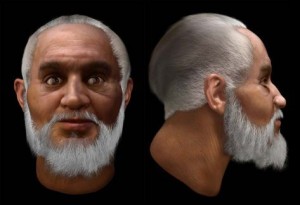This image was popularised in the 1930s by the Coca-Cola adverts. But what were the origins of this fat jolly old man? St. Nicholas was born in Turkey and became the Bishop of Myra. He was known throughout the land for his kindness and generosity.
When he died in 343CE, it was claimed that a relic called manna formed in his grave. This substance people claimed, had healing powers and helped in the growth of the cult of St. Nicholas. In 1087CE, a group of sailors who idolised the saint moved his bones to a sanctuary in Italy. Italians already had a female giving deity called the Grandmother, who was supposed to fill children’s stockings with gifts; however, she was ousted and replaced by St. Nicholas, making him the bearer of gifts for children.
Members of this group conducted an annual pageant in which they gave each other presents on Dec 6th the anniversary of St. Nicholas’ death. Later on the St. Nicholas cult spread north and was adopted by German and Celtic pagans. These tribes worshiped Woden (father of Thor) who it was claimed had a long white beard and rode through the heavens, one evening each year in autumn.
When St. Nicholas merged with Woden, he lost his Mediterranean appearance, grew a beard, rescheduled his flight for December and donned heavy winter clothing, thus the myth of St. Nick or Santa Claus continued to evolve into the image we know today. Another major ritual in cultures influenced by Western society is the singing of carols. But what are the origins of these festive songs?
Many of the carols have pagan roots. Their origins had nothing to do with Christmas but more with the Greek Choros, a circling dance associated with fertility rites that were sung to celebrate the Winter Solstice. Carols were outlawed by the early church until the Middle Ages, when St. Francis of Assisi played a crucial role in Christianizing the carol by associating it with the nativity.
In Scotland it was associated with witchcraft. Oliver Cromwell banned Christmas and the practices that went along with it, for being a pagan festival. It was the Victorians who popularised and promoted the singing of carols.
Many of those customs have moved from ancient and medieval times into modern times and while some of them have been given the façade of respectability and innocuous innocence, many of the customs associated with Christmas, are not really Christian in origin but have their roots in old pagan celebrations and customs pertaining to the Saturnalia.




